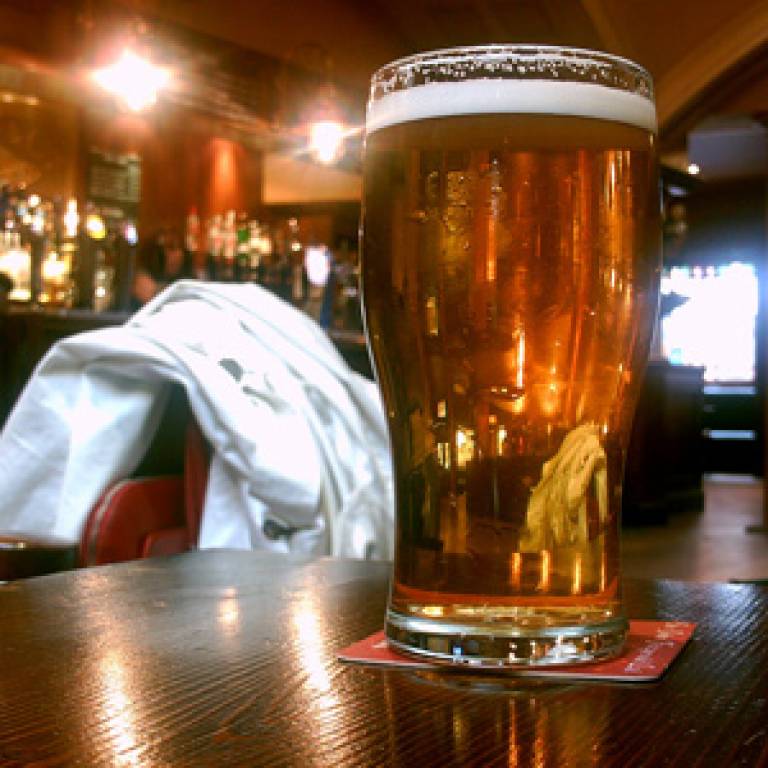Alcohol consumption higher than reported in England
27 February 2013
Alcohol consumption could be much higher than previously thought, with more than three quarters of people in England drinking in excess of the recommended daily alcohol limit, according to a new paper in the European Journal of Public Health.

The study, conducted by researchers in the UCL Department of Epidemiology and Public Health, is the first to investigate the potential public health implications related to the under-reporting of alcohol consumption.
International studies have shown that self-reported alcohol consumption only accounts for between 40 and 60 per cent of alcohol sales. The UCL team investigated this discrepancy to reveal the potential impact of this 'missing' alcohol on public health.
Sadie Boniface, lead author of the study at UCL, says: "Currently we don't know who consumes almost half of all the alcohol sold in England. This study was conducted to show what alcohol consumption would look like when all of what is sold is accounted for, if everyone under-reported equally.
"The results are putative, but they show that this gap between
what is seen in the surveys and sales potentially has enormous implications for
public health in England."
The Royal College of Physicians recommend weekly alcohol limits of 21 units for men and 14 units for women, while the UK Chief Medical Officers have recommended not to regularly exceed four units per day for men, and three units a day for women.
This study shows what alcohol consumption would look like when all of what is sold is accounted for, if everyone under-reported equally... The results are putative, but they show that this gap between what is seen in the surveys and sales potentially has enormous implications for public health in England.
Sadie Boniface, UCL Epidemiology & Public Health
After correcting the data for the under-reporting of alcohol consumption the UCL team found that the prevalence of drinking more than the weekly guidelines increases by 15 percentage points in men and 11 points in women, such that 44 per cent of men and 31 per cent of women exceed the guidelines.
Similarly, the prevalence of drinking above the daily limit increases by 19 percentage points in men (to 75 per cent) and 26 points in women (to 80 per cent).
In addition, the study also shows that when under-reporting is taken in to account, approximately half of men and women could be classed as 'binge drinkers' (defined by the Department of Health as consuming more than eight units of alcohol in a single session for men, and more than six units for women). In particular, the proportion binge drinking increases the most among women, those on high incomes, and those living in the south of England.
The team used data from the General Lifestyle Survey (GLF) 2008 to analyse self-reported average weekly alcohol consumption levels in 12,490 adults. The GLF was an annual longitudinal survey designed to be representative of the adult population in Great Britain.
The team used data from the Health Survey for England (HSE) 2008 to analyse self-reported alcohol consumption on the heaviest drinking day in the last week among 9,608 adults. The HSE is an annual survey designed to be representative of the adult population in England.
"What's needed now is a detailed understanding of whether some people under-report their consumption more than others: to what extent does this vary between men and women for example, by how much someone drinks, or by what types of drink they prefer," says Ms Boniface.
"Little is known on this at present, but this could reveal groups who under-estimate their alcohol consumption substantially, illuminating areas where targeted alcohol education initiatives should be developed."
-Ends-
Media contact: David Weston
Image caption: Beer glass, by Tim Dobson on Flickr
Links:
 Close
Close

